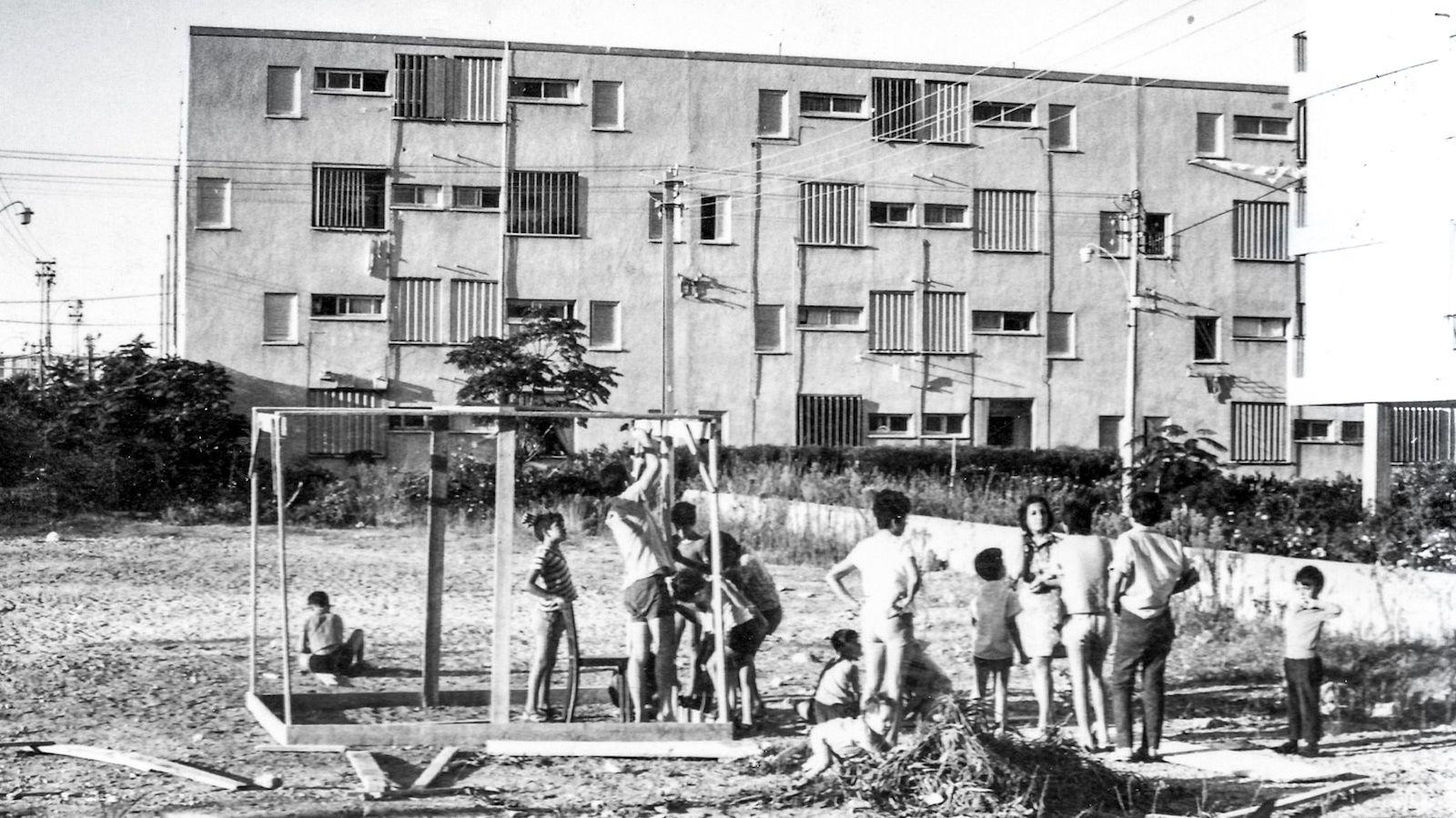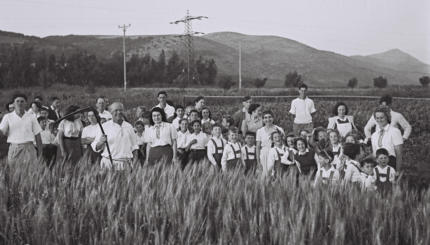The revival of Jewish life through Zionism is the latest stage of our long journey that began with the Exodus. The custom of building sukkot in Jerusalem for pilgrims from surrounding countries, which had ended centuries before Jewish nationalist stirrings, was reestablished in the early 1900s. Pilgrims from within Palestine began making the trek to pray on the Mount of Olives opposite the Temple site, around which they walked seven times on Hoshanah Rabbah.
The settlers emphasized the renewal of Jewish life through restoration of the Land. Etrogs became one of the earliest crops, the beginnings of Israel’s once dominant citrus industry. When Jerusalem was divided during the War of Independence (1948), the devout moved their prayer to Mount Zion.
American Reform Jews reintroduced the holiday’s harvest nature in the 1930s, with a reenactment of the pilgrimage that is still seen today [albeit only in a few classical Reform congregations]. Groups of children carrying various fruits and vegetables sing hymns as they march around a model sukkah erected in the synagogue, which has been liberally decorated with fruits and flowers.
In the Warsaw ghetto, Holocaust labor camps and Stalinist Soviet Union, Jews continued to celebrate Sukkot. It gave them hope for a positive endpoint to their own journeys in exile.
With your help, My Jewish Learning can provide endless opportunities for learning, connection and discovery.
Largely based on the return of Jews from what was the Soviet Union to Israel, evangelical Christians believe the messiah is on his way. Expecting the arrival during Sukkot, thousands of them gather in the Holy Land each year for the Feast of Tabernacles Conference, organized by the International Christian Assembly. Since 1980, these supporters of the State of Israel have joined tens of thousands of Israelis in their annual Sukkot processions through Jerusalem.
Reprinted with permission of the publisher, 1994 by Jason Aronson
Sukkot
Pronounced: sue-KOTE, or SOOH-kuss (oo as in book), Origin: Hebrew, a harvest festival in which Jews eat inside temporary huts, falls in the Jewish month of Tishrei, which usually coincides with September or October.
etrog
Pronounced: ETT-rahg, Origin: Hebrew, a citron, or large yellow citrus fruit that is one of four species (the others are willow, myrtle and palm) shaken together as a ritual during the holiday of Sukkot.
lulav
Pronounced: LOO-lahv (oo as in boo), Origin: Hebrew, a bundle of branches representing three species -- willow, myrtle and palm -- which are shaken together with the etrog on Sukkot.
sukkah
Pronounced: SOO-kah (oo as in book) or sue-KAH, Origin: Hebrew, the temporary hut built during the Harvest holiday of Sukkot.



